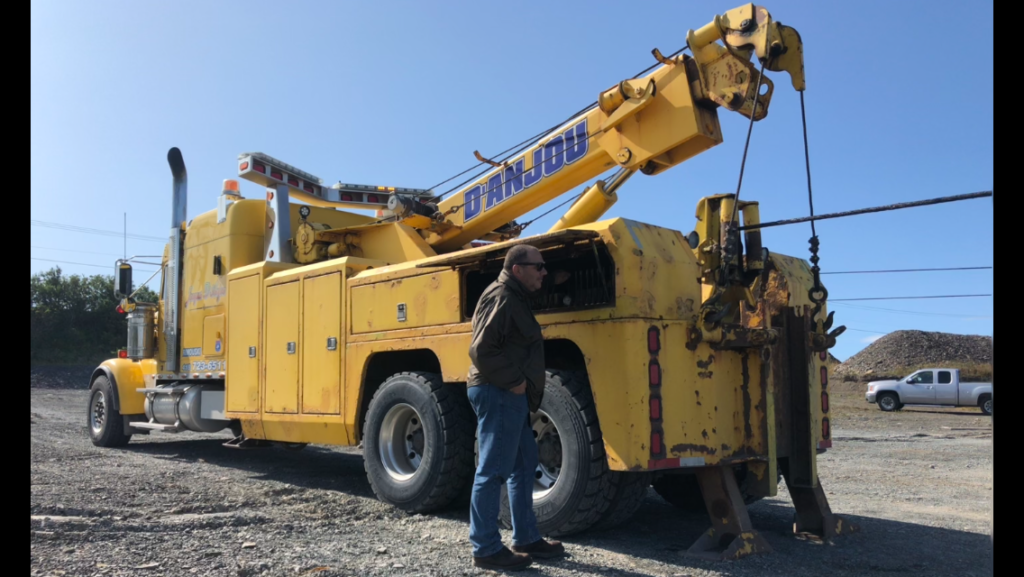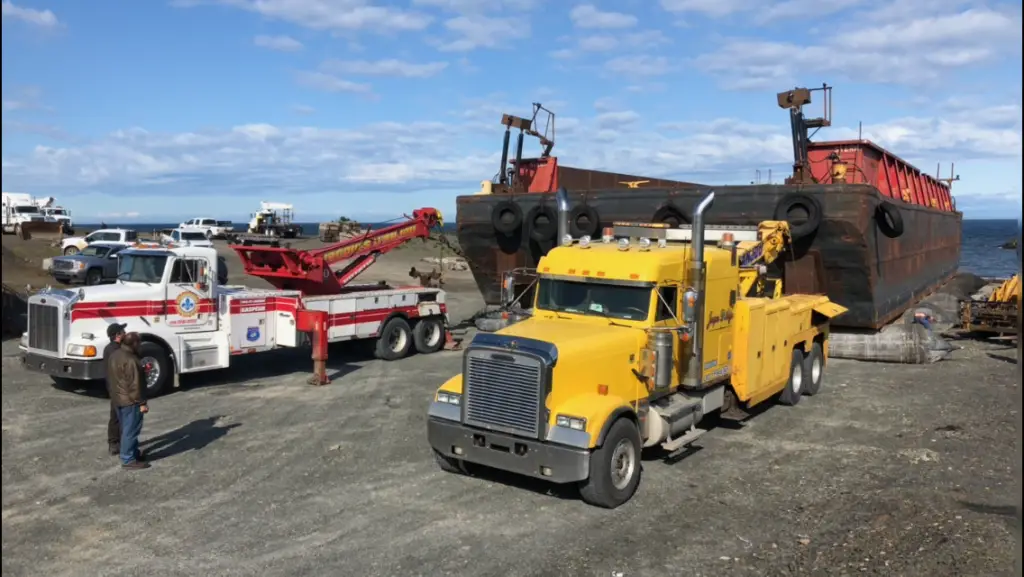by Tony D’Anjou, Dominic Hébert
What does it take to move a barge down a slope? For Remorquage Provincial Jacques D’Anjou it took three days, two tow trucks, a dozen marine airbags, and a lot of coordination.

When Remorquage Provincial Jacques D’Anjou, of Rimouski, Quebec, got a call from a contractor, Polo Gauthier, owner of Les Barge de Matane, asking if they were able to launch a 350-ton barge, they agreed without hesitation. In 2008 they hauled up the HMCS Onondaga, a Canadian submarine that was purchased as a museum vessel for preservation. The Onondaga weighed three million pounds and it wasn’t easy to remove the vessel from the water and transport it, but Remorquage Provincial Jacques D’Anjou did a great job back then.
This time, the assignment was to move a barge down a four-percent slope to a distance of about 525 feet. Gauthier told Tony D’Anjou, vice president at Remorquage Provincial Jacques D’Anjou, that the barge was sitting on concrete blocks, placed at each corner of the barge, next to the pier in Sainte Flavie, Quebec. He also told him that to lift and roll the barge, they would be using big inflatable marine airbags.
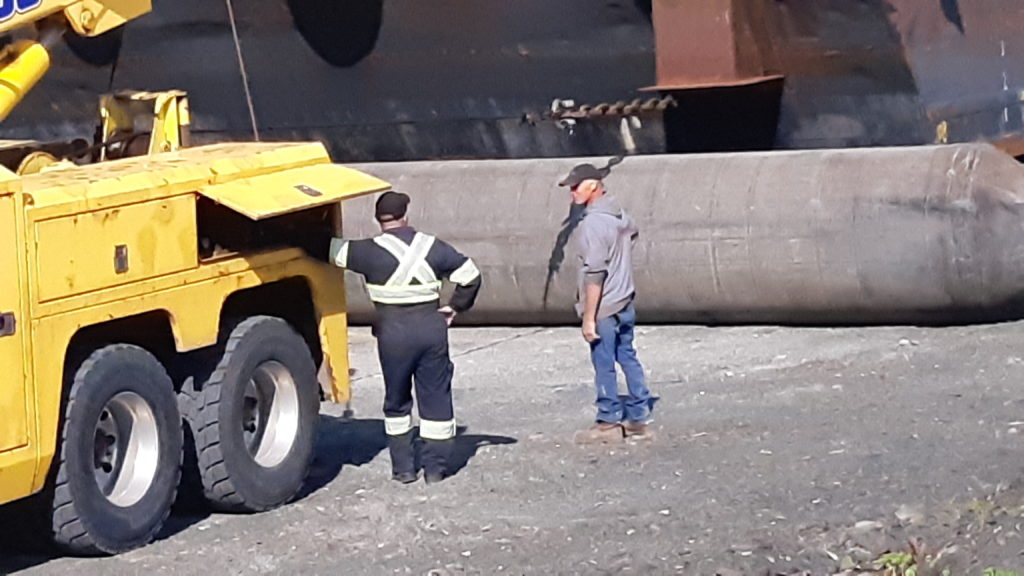
Tony D’Anjou and his father Jacques D’Anjou discussed the action plan and agreed on what equipment to use in order to proceed safely and without putting anybody, or the barge, at risk. They decided to use a 60-ton Miller rotator with a Tulsa 50,000 lbs. winch and a 50-ton NRC tow truck.
They planned to do the job in three days, as they could only work in the mornings, due to the tide in the Sainte Flavie river rising every day, around noon.
Day One
On July 12 at 7:30 AM they arrived on site with their rotator and tow truck and figured that they would have to use a 50-ton drag winch and four more ropes equipped with snatch blocks to ease the barge down the slope.
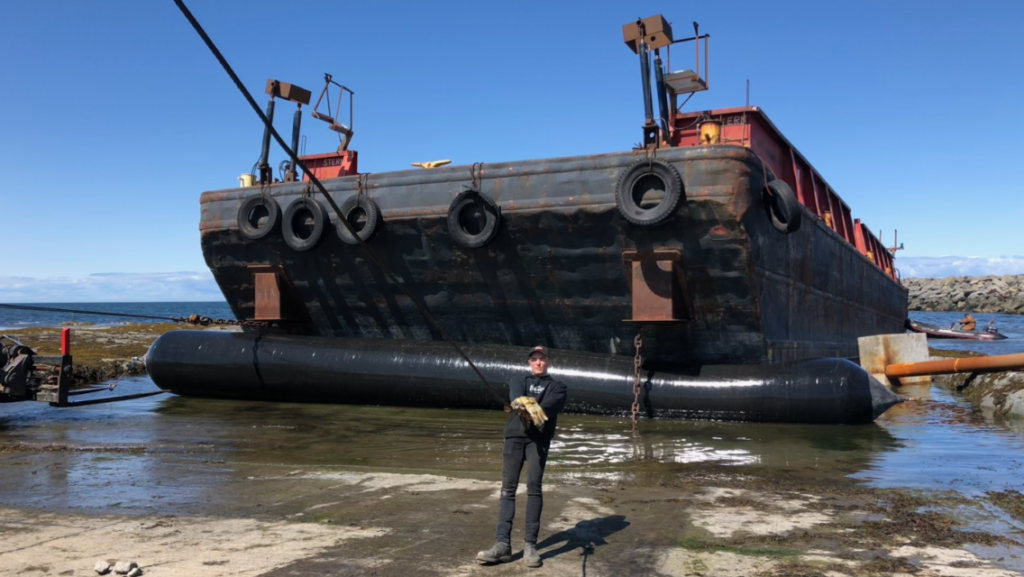
Gauthier began with the installation of giant ship launching airbags under the barge. Each airbag was 50 feet long and 48 inches wide. To lift the barge from the concrete blocks, between 10 to 12 airbags had to be placed under the flat-bottomed boat at the same time. All airbags were pressurized between 10 and 12 P.S.I. by a commercial compressor built on a two-axled trailer.
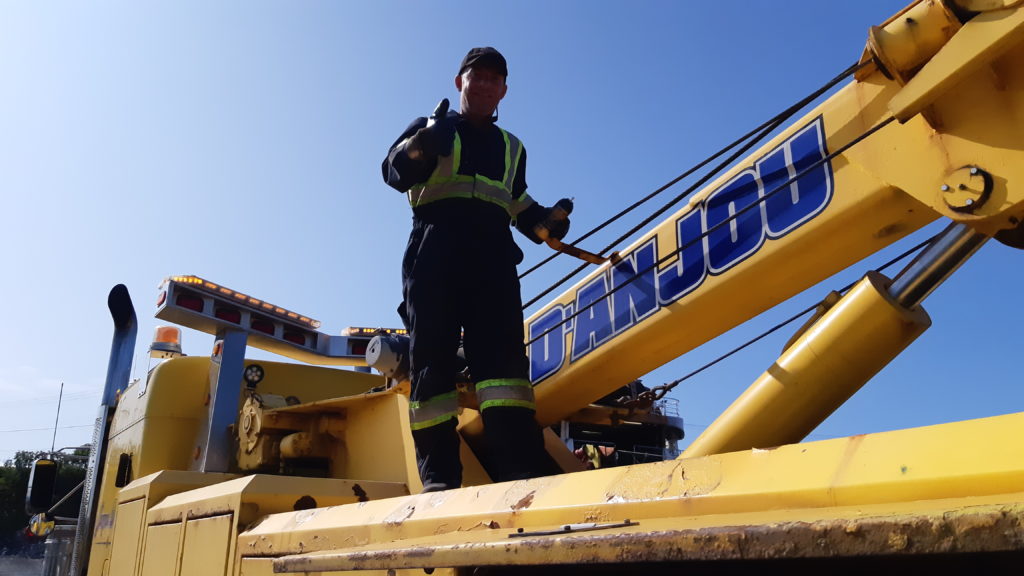
It took around ninety minutes to attach the tow truck to the barge and to properly install and inflate the airbags. After that it was time to release the chocks that prevented the barge from rolling down the slope. Everything had gone smoothly, so far. Tony and Jacques D’Anjous, their tow truck operator Samuel Level, and contractor Gauthier demonstrated awesome teamwork.
The tow truck operators simultaneously released the cables to let the barge go down the hill towards the St Lawrence River. Once the barge slid down from a rear airbag, the airbag was brought to the front to support the next slide. On day one Remorquage Provincial Jacques D’Anjou moved the vessel about 200 feet down the hill. They stopped working at noon, when the high tide approached.
Day Two
The job resumed at 9:00 AM the next morning by re-hooking two tow trucks to the barge. The snatch blocks were attached to two-inch chains placed on each corner of the barge. It helped to manoeuvre the barge down the hill so it would pass between the poles at the end of the ramp. In the process, Remorquage Provincial Jacques D’Anjou had to stop unwinching cables when they were getting near the end of the winch drums.
To increase pulling force, one tow truck had to winch back 200 feet of cable while wheel chocks were put on the tow truck that was still attached to the barge. The other tow truck was detached by slowly releasing the cables, preventing the truck from being dragged into the river by the weight of the barge.
After all lines on the truck were successfully released and the cables winched back, the tow truck was backed up closer to the barge so that all the lines could be reconnected to ease the barge farther down the ramp.
At around 10:30 AM a strong wind started pushing the barge. At the same time the tow truck’s wheels sunk into the ground while attempting to counter the pull of the barge. Despite one tow truck backing up the other, the first vehicle shifted about 36 inches before settling itself and stopping on the gravel alley.
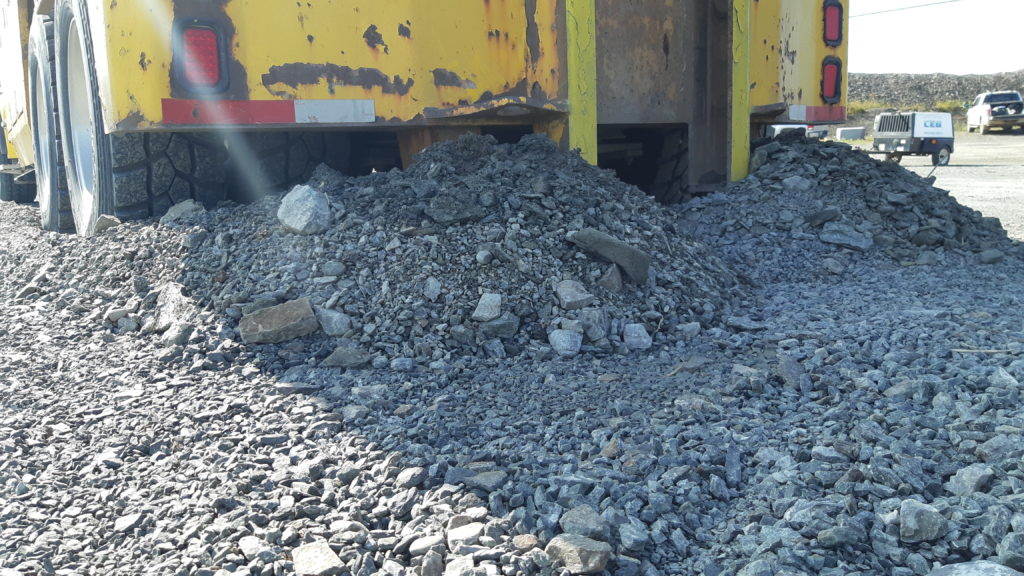
Under the windy conditions, the work became unsafe, so Tony D’Anjou and Gauthier decided to stop the job and continue the next day. “Mother Nature sometimes doesn’t work with us, but against us,” explained D’Anjou. They set the barge back down on the concrete blocks for the night. There was still about 175 feet remaining to put that magnificent piece of steel into the water.
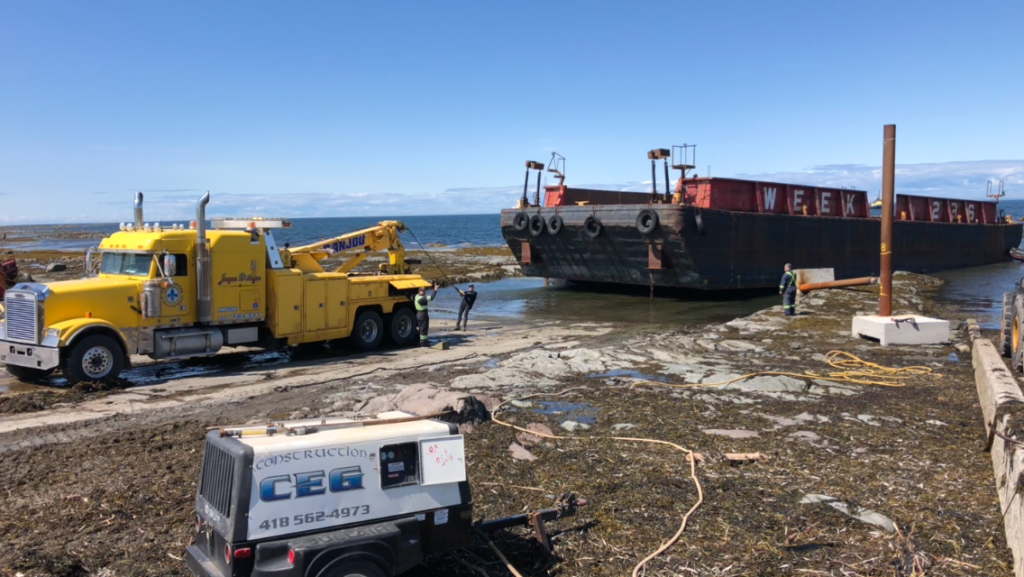
Day Three
On the final day the work started at 9:00 AM. The tow trucks were re-hooked to the barge chains and the airbags were re-inflated to lift the 700,000-pound barge back up. Gauthier and his team removed the chocks in the back and the vessel started to roll down the ramp perfectly. During the process, they had to re-winch cables once. The winds were pretty slow and the sun was out for an awesome day. Everything seemed to be perfect that day—the weather, the timing, and the communication. Everyone acted as perfectly in sync as they had on day one and day two. The barge was launched into the water at 12:40 PM. After that, it was pulled by a 100-foot long tugboat to its destination.
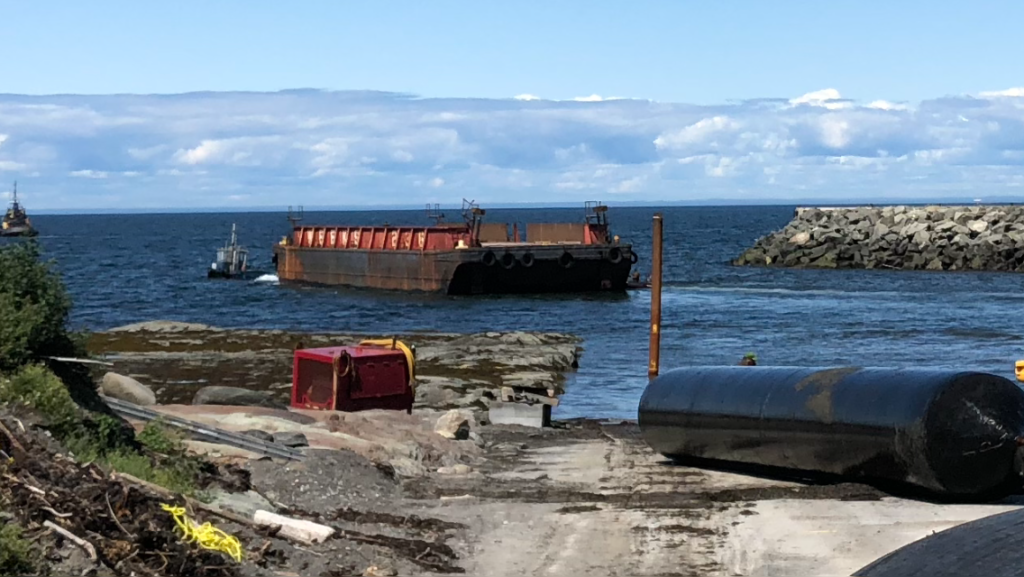
About Remorquage Provincial
Tony D’Anjou is a vice president at Remorquage Provincial Jacques D’Anjou in Rimouski, Quebec. His family has been in the tow truck business for more than 45 years and is now proudly introducing the third generation to the family business—seven-year-old Léa.
She loves hanging around trucks and often comes to work with her dad, Tony. Since she was three years old she followed his steps into the business in every aspect of the job.
Remorquage Provincial Jacques D’Anjou operates in the region of Bas-St-Laurent and Gaspesia, where they provide all kinds of specialized transport in Eastern Canada. Their fleet includes Landoll, goose neck, flat bed and dry box trailers.
They describe their specialty as follows: “We are specialized in what others can’t do!
